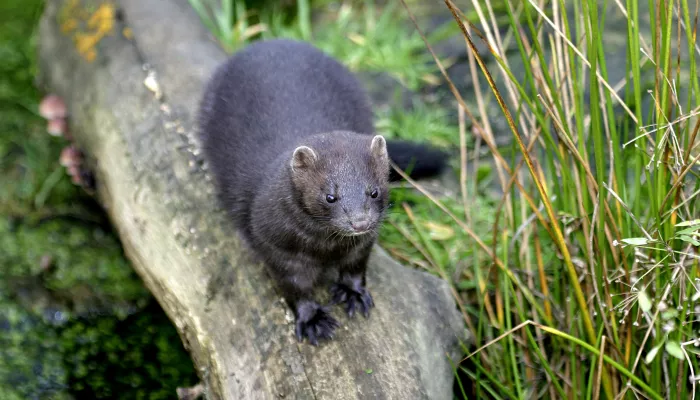About
The American mink (or just 'mink') escaped from fur farms in the 1950s and 1960s, and now breeds across most of the country. It is an active predator, feeding on anything it is big enough to catch, including ground-nesting seabirds and our native water voles, which are now under threat of extinction. Mink are good swimmers and females are small enough to enter the water-line burrows of water voles and take their young.
Mink are fiercely territorial; their dens are close to the water and the females have one litter of four to six kittens a year. Mink are much more likely to be seen than the shy and secretive otter.
How to identify
The mink is a small, lithe mammal, with brown-black fur, a narrow snout, a small, white chin and a white throat. Mink can be distinguished from otters by their smaller size, darker fur, and smaller face.
Did you know?
American mink droppings or 'spraints' are deposited in similar sites to those of otters - by prominent fallen trees, weirs and bridges - as 'scent messages' to passers-by. However, mink spraints have a particularly pungent, foul, fishy odour and are very distinct from otter droppings, which smell like jasmine tea.

